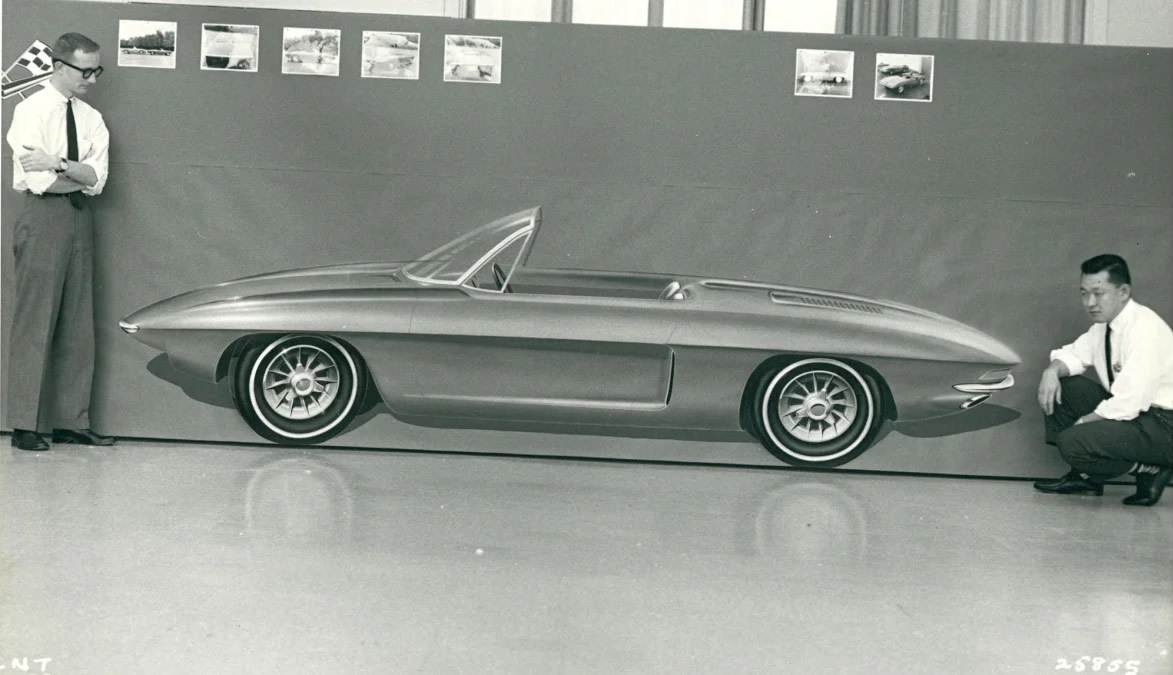Carl Renner, Chevrolet Corvette Designer
Scripps Ranch man may have had key role in designing first 'Vette
 By Jonathan Heller, Staff Writer
By Jonathan Heller, Staff Writer
San Diego Union Leader
April 2, 2005
San Diego, CA - Was the Chevrolet Corvette, the icon of American sports cars, born in the mind of a man from Scripps Ranch?
It's hard to know exactly what the late Carl Renner did in terms of designing the original 1953 Corvette because the program was shrouded in secrecy. Not many people who were close to the project are still living.
And Renner himself, who died in 2001 at 77, was not one to boast of his accomplishments.
Some people, though, insist that Renner never received the credit he deserved for changing the landscape of American motoring.
Renner grew up in Detroit and drew cartoons for Walt Disney before starting a 35-year design career with General Motors in 1945.
Officially, he was the driving force behind the design of the classic 1955 Chevrolet and later the Chevy Corvair and Impala. But there are indications that he also played a central role in developing the Corvette.
Chuck Jordan of El Cajon, a retired GM vice president for design, remembers a time in 1952 when a secret design studio was created in the Detroit automaker's complex. Only a few employees were allowed in, Renner being one of them.
"Carl was the designer in there, and they were working on an inexpensive Chevy sports car, which we know finally became the Corvette," Jordan says.
The program was run by Harley Earl, the well-known GM stylist who is one of two people commonly referred as the "father of the Corvette." The other is engineering legend Zora Arkus-Duntov.
Run "Carl Renner" and "Corvette" through Google and 51 hits pop up, though none of them contains much about Renner's contribution to the vehicle. His involvement is more the stuff of whispers and rumor than documented fact.
"While we do have some written information on Carl Renner, most of what we currently know is anecdotal information that was given verbally," says Roc Linkov, events manager at the National Corvette Museum.
"There are indications that he was the person who actually penned the first sketches of the '53 Corvette, but (I) have not been able to verify that with any written documentation at this time," Linkov says.
Julius Teitlebom of Palm Springs, a retired model maker for GM, is adamant that Renner was the key to the entire Corvette program, which was code-named "Project Opel" in 1952.
"He did most of the designing," says Teitlebom, who has been lobbying to have Renner inducted into the Corvette Hall of Fame.
Part of the problem in pinpointing Renner's contribution is Earl's legendary penchant for secrecy, says Noland Adams, a Corvette historian who has written several books on the car's development.
Unauthorized employees were warned away from the secret design studio. Designers inside were given small, isolated tasks, such as a grille or wheel cover. After hours, Earl would prowl around, taking sketches he liked from various desks and incorporating them into coherent designs.
"These guys really weren't aware of how their designs were being used," Adams says. "Renner himself didn't know how much he contributed until I met him and started pointing things out."
Tantalizing hints to this puzzle are contained in Renner's design logs and notes. His widow, Lillian Renner, keeps them stashed away in her Scripps Ranch home, where the couple settled in 1989.
(Renner did not talk about his work much, and his wife had little interest in cars, so she does not have much of an idea of what Renner did for the Corvette, she admits.)
Renner kept precise and detailed notes of his work from 1948 through 1965. But the period between 1952 (when the secret design studio opened) and 1955 seems uncharacteristically vague.
His only entry for 1952 reads: "Front end grill header, front end center bar blades, bumper guards, hub caps, rear fender side treatment, tail lights, rear fender, chrome fins, interior brake handle."
Later entries are more comprehensive, naming the specific prototype for which his designs were intended. "Corvair total front end design," is an example of a 1960 entry.
It's puzzling that, in some places, Renner does take small credit for Corvette innovations, such as "Corvette front fender and body side cove" in 1956. In 1961, he designed the Corvette's "horizontal creased rear end."
But his 1952 entry remains mysteriously vague, perhaps the way Earl would have wanted it. Renner was nothing if not a loyal employee, Teitlebom and Jordan say.
But Jordan, who was well-acquainted with Renner's work, says the 1953 Corvette has Renner's unique touch.
"The design of the vehicle was futuristic. It was new. It was imaginative," Jordan says. "Carl was the king during the 1950s."
